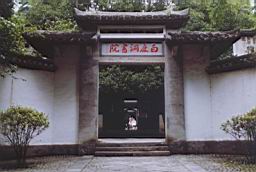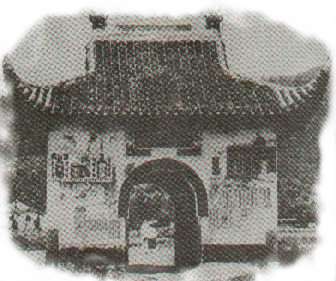|
To know the ancient educational system, you first have to know the history of academies.
The academy is one of ancient educational systems in China , like today's private or public schools. Its origin dates back to the Tang dynasty, and it became an established institution in the Five Dynasties and flourished throughout the Song and Yuan dynasties, up to the Ming and Qing dynasties.
Ancient state-run public schools aimed to train future government officials, not students, Therefore, no common people could enroll in them. In a society where only the literati were greatly esteemed and could have the possibility to pass civil service examinations, academies were established in private sectors.
1.
Functions of Academies
The functions of academies were broader than those of state-run public schools. Besides cultivating candidates for government office, academies were places to provide primary education to children and cultivate research scholars. The functions included childhood education, basic education, and university education.
Though academies were operated by commoners, their achievements were remarkable and their functions were broad. It is no exaggeration to say that they were Ħ§the cradle of the educated.Ħ¨
2.
Origins of Academies
 |
The restored Bai Lu Dong Academy in Lu Shan, Jian Xi Province still retains some of its past magnificence.
|
The earliest academy was the Li Zeng Academy of Book Editing and Collating founded by the emperor Xuan Zong of Tang.
Besides doing research and editing books, it aimed to be an institution which provided counsel on scholarly affairs to the emperor. State-run public schools fell into ruin due to the unending wars at the end of the Tang dynasty.
In the Five Dynasties, when chaos reigned everywhere and schools became ruins, academies where lectures were given and books were kept, took the place of state-run public schools and became the center of education. In the blossoming age of Neo-Confucianism ( a rationalistic school of Confucian philosophy popular in the Song and Ming dynasties ), in order to make known one's personal thought, the trend of lecturing in academies became popular.
Academies were promoted by well-known scholars (such as Zhu Xi, master of Neo-Confucianism) and sponsored by the government. More and more academies came into existence. The intellectual levels of many academies were even higher than those of state-run public schools.
 |
An old view of the Bai Lu Dong Academy in Lu Shan, Jian Xi Province
|
Famous academies in the Song dynasty were the Bai Lu Dong Academy, the Song Yang Academy , the Ying Tian Academy , and the Yue Lu Academy.
The Bai Lu Dong Academy was located in Lu Shan, Jiang Xi Province. It was built at the beginning of the Song dynasty but stopped functioning for some reason. Its rooms and chambers fell into disrepair.
Later, Zhu Xi rebuilt the Bai Lu Dong Academy and became its principal. He lectured, discussed philosophical issues, and set rules to make the academy an environment where his ideal of education was to be implemented. These were the famous Ħ§Rules of the Bai Lu Dong Academy,Ħ¨ which, so to speak, summarized the spirit of mainstream education in China , and were the model for educational systems of later times.
Later academies worshiped Zhu Xi and ancient sages. This became a deep-rooted tradition among the common people. Academies became important institutions that inculcated moral integrity and promoted scholarly study, which made a great contribution to propagating traditional Chinese culture. |




